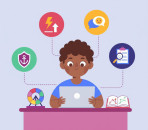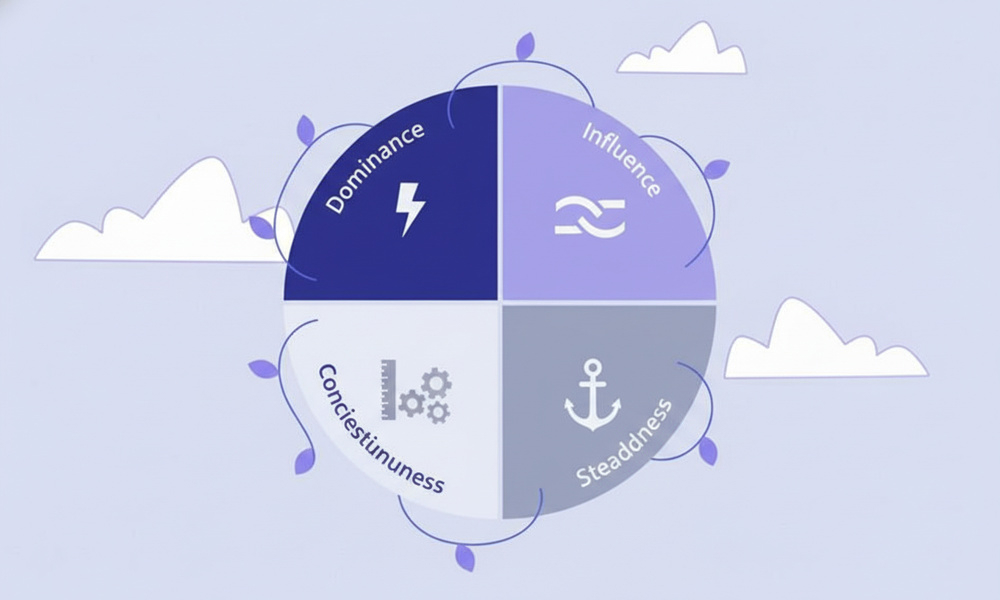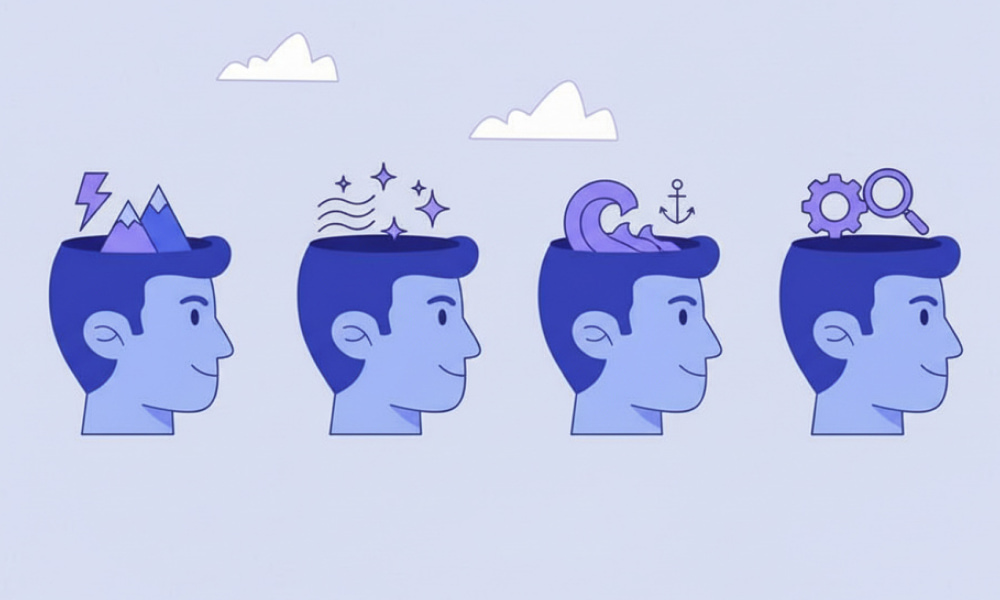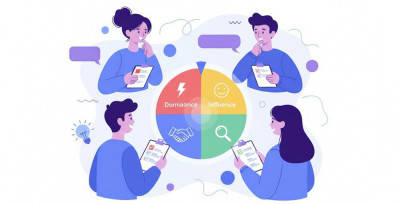Take DISC Personality Assessment: Online Profile Test
New Updates



Online DISC Personality Assessment Tool
Get StartedUncover Your Hidden Traits and Communication Strengths With DISC Test
People-centric workplaces thrive when colleagues understand predictable behavioral patterns, situational triggers, and motivational cues. In fast-moving teams, clarity about how others prefer to decide, interact, and resolve friction reduces costly misunderstandings. In many organizations, managers lean on the DISC personality assessment to decode communication preferences and conflict triggers, enabling smoother collaboration and faster decisions. By mapping recurring behavioral tendencies, the framework provides a shared language for feedback, coaching, and teamwork that cuts through ambiguity.
The model’s roots lie in observable behavior, not labels, so it focuses on what people do rather than who they are. By design, the DISC personality framework simplifies complex tendencies into four easy-to-grasp styles, which helps non-experts engage with the insights quickly. Teams can DISCuss real interactions without drifting into vague theory, because the language stays concrete and actionable. This pragmatism makes the approach compelling for supervisors, facilitators, and individual contributors alike.
While the approach is straightforward, it is not simplistic, and nuance matters when applying it in real scenarios. For deeper practice, coaches may use structured debriefs that link everyday habits to situational strengths. In learning programs, facilitators often employ DISC personality profiling as a springboard for reflection, encouraging participants to compare perceived intent with observable impact. That contrast yields practical commitments, such as adjusting pace, tuning detail levels, and flexing assertiveness in meetings.
- Promotes a shared vocabulary for behavior and communication.
- Transforms feedback from subjective impressions into observable actions.
- Encourages adaptive strategies that reduce interpersonal friction.
- Supports leadership development through targeted, scenario-based practice.

How the Assessment Works and What Your Graphs Reveal
Modern instruments gather responses across situational prompts to estimate preferred ways of influencing the environment. Short, timed surveys reduce overthinking and reveal natural tendencies under light pressure. Some vendors advertise a DISC personality test free option, which can be helpful for a first look before investing in a deeper report. Regardless of price point, the most valuable tools translate scores into plain-language insights you can apply in your next conversation.
| Style | Typical Drivers | Core Strengths | Watch-outs | Coaching Tips |
|---|---|---|---|---|
| Dominance | Results, speed, control | Decisive, bold, competitive | Impatience, bluntness | Slow down for context and buy-in |
| Influence | Connection, enthusiasm | Persuasive, energizing, visible | Scattered focus, optimism bias | Ground ideas with commitments and facts |
| Steadiness | Stability, harmony | Reliable, patient, supportive | Aversion to conflict, hesitation | Voice needs; practice candid boundaries |
| Conscientiousness | Accuracy, standards | Analytical, careful, quality-driven | Overanalysis, rigidity | Share rationale succinctly; time-box detail |
After you complete an instrument, you typically receive a narrative summary and charts that visualize intensity across the four style factors. For clarity and action, many practitioners pair graphs with situational recommendations aligned to real work. A rich narrative often connects patterns to tasks, meetings, and stakeholder dynamics, creating a bridge from data to practice. In those reports, a practical highlight is the DISC personality profile, which distills the data into an accessible storyline you can discuss with your manager.
To lock in learning, facilitators encourage participants to compare self-perception with colleague feedback and recent outcomes. Embedding insights into one-on-ones, retrospectives, and onboarding helps the language stick, especially when it is linked to objectives. When trying access-first options, many teams start with a free DISC personality test as a low-friction introduction and then transition to validated solutions during formal development.
Real-World Applications in Work and Life
Behavioral agility pays off across leadership, sales, product, and operations, because it sharpens how people listen and influence. In performance reviews, managers who translate tendencies into concrete actions build trust and accelerate growth. For hiring and mobility, ethical practice means assessing job-relevant behaviors and triangulating with multiple signals. During structured development cycles, HR partners often leverage DISC personality profile testing to spark coaching conversations that tie style to role expectations.
Collaboration improves when people adapt channel, pace, and detail to their audience’s preferences, which reduces rework and stress. In customer-facing roles, discovery questions uncover buying motives and decision processes, enabling meaningful tailoring without scripts. Sales enablement teams sometimes reference the DISC test personality when designing playbooks that balance rapport with clarity, so representatives can flex messaging to different stakeholders. By aligning outreach with behavioral cues, teams shorten cycles and lower friction.
Conflict management also benefits from explicit agreements about how to give and receive feedback during crunch time. Project leaders can set norms for escalation paths, decision rights, and meeting hygiene that respect diverse working speeds. Learning programs that mix simulations, feedback rounds, and micro-practice build consistency under pressure. In blended curricula, organizations frequently include DISC training personality modules to convert insights into daily habits that endure beyond the workshop.

Selecting Quality Instruments and Avoiding Pitfalls
Not all instruments are equal, and due diligence matters when people decisions are at stake. Reputable providers publish technical documentation, offer norm groups, and provide clear guidance on interpretation boundaries. The most effective rollouts pair assessments with facilitation, coaching, and follow-up resources for everyday use. When setting expectations, leaders should clarify the meaning of DISC personality test outputs so teams avoid overgeneralization and stereotyping. Validity, reliability, and role fit are the bedrock of ethical usage, especially in talent processes with real consequences. Mature HR teams use complementary data such as performance evidence, 360s, and structured interviews to balance perspectives. It is also helpful to pilot with a small cohort, gather feedback, and iterate on enablement materials. For governance, many organizations document procedures for DISC personality profile assessment selection and usage to maintain consistency and fairness.
Technology, pricing, and support vary widely, so it is wise to compare multiple vendors before committing. Service level agreements, data protection practices, and localization can make or break global deployments. Administrators should test usability for both desktop and mobile, ensuring minimal friction across devices and languages. When evaluating platforms, buyers often prioritize a user-friendly DISC personality assessment tool that integrates with their learning ecosystem and HRIS.
- Prioritize instruments with transparent research and clear manuals.
- Train managers to interpret patterns without stereotyping people.
- Embed insights into routines like one-on-ones and project kickoffs.
- Measure outcomes such as engagement, cycle time, and error rates.
Online DISC Personality Assessment Tool
Get StartedFrequently Asked Questions
-
Is DISC a measure of ability or intelligence?
Neither, because the framework focuses on observable behavioral preferences rather than cognitive horsepower or raw skill. The lens emphasizes how people tend to approach tasks, pace, risk, and collaboration under everyday conditions. By keeping its scope to behavior, the model avoids conflating style with potential, which helps teams make fairer decisions. For those curious about taxonomy, many practitioners contrast this approach with trait-based inventories to highlight distinct purposes beyond a DISC model personality test comparison.
-
Can my style change over time?
Behavior can evolve with context, coaching, and role demands, though core preferences often remain recognizable. Significant life events, new leaders, or different job designs can shift what feels natural in day-to-day work. Because people adapt under pressure, it helps to DISCuss both typical behavior and stress responses when interpreting results. In group debriefs, facilitators invite reflection using journal prompts and exercises rather than a quick DISC personality quiz replacement.
-
Should hiring decisions rely on DISC alone?
No, responsible talent practices require multiple data sources, clear criteria, and structured processes. Instruments offer useful signals about how someone prefers to work, yet they do not predict performance independently. A rigorous process pairs assessments with evidence from work samples, references, and behavioral interviews aligned to the role. When everything is integrated thoughtfully, selection becomes more equitable without overweighing any single indicator.
-
What makes a good team debrief?
Great sessions are psychologically safe, practical, and anchored in real scenarios the group faces. Facilitators set expectations, avoid labels, and encourage people to articulate needs during collaboration hotspots. Teams build norms that translate style awareness into small habits, like clarifying decisions or summarizing agreements. For participants exploring at home, some start with a DISC personality test online free resource and later attend a guided session for deeper learning.
-
How do I turn insights into daily habits?
Micro-behaviors convert understanding into results, so choose one change you can practice this week. Examples include asking a clarifying question before responding, sharing rationale succinctly, or stating a clear decision deadline. Pair the habit with a cue, such as calendar reminders or meeting agendas, and review progress weekly. Over time, these small adjustments compound into stronger relationships, faster work, and higher quality outcomes.
 The Complete Guide to DISC Personality Insights for Smarter Self-Discovery
The Complete Guide to DISC Personality Insights for Smarter Self-Discovery